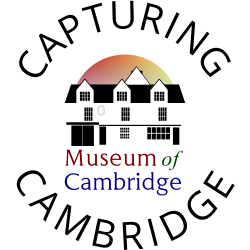Horsechestnuts at Grantchester (1937) is © Estate of Gwen Raverat, 2005. All rights are reserved.
Friend of the Museum of Cambridge Carolyn Ferguson explores the relationship between two notable Cambridge artists.
Gwendolyn Darwin, later Raverat, met Mary Charlotte Greene for the first time as a gawky nine-year-old. She was experiencing the joys of clear vision for the first time, having recently acquired her first pair of spectacles. Gwen declared soon after that her Wednesday drawing lessons with ‘Miss Greene’ had quickly became “the centre of my youthful existence” and that “Miss Greene’s warm, generous, and appreciative nature was a great release and encouragement to me”.
‘Miss Greene’ was, by then, a professional female artist with a rather ramshackle corrugated-iron studio at the back of a lawyer’s office in St Andrew’s Street, Cambridge. Gwen was not alone at her lessons, for some of her cousins and the children of her parents’ friends also took part. A letter from her aunt, Lady Ida Darwin, had triggered the class, which not only helped Gwen but also gave Mary Greene a chance to become accepted in Cambridge society circles.
Mary Greene thought that her pupils could best appreciate the oddities and eccentricities of a university town by experiencing them firsthand, the group had numerous escapades as a result. Their jaunts included a match-lit visit to the cellars of the Cast Museum (the Museum of Classical Archaeology, then in Little St Mary’s Lane) and being locked in the Round Church with a lunatic.
In the summer, classes were often held on the streets of Cambridge or in one of the many inn yards, on occasion they even ventured out into the fens. It is hardly surprising therefore that Gwen became so adept in the art of perspective, people, landscape and architecture. ‘Miss Greene’ not only inspired in her both a love of drawing and an interest in the paintings of the ‘old masters’, but also encouraged Gwen to keep a sketchbook diary. Even at the age of 21, Gwen was still attending an occasional class in the artist’s studio, by then transferred from a leaky shed to a building far more suitable for the legions of lady amateurs that were attending classes.
Mary Greene singled out Gwen as someone with obvious talent and ensured that she gained entry to the Slade School of Art. While Gwen experienced the works of post-Impressionism, the Bloomsbury Group and became famous for her wood-engravings, Mary Greene remained in Cambridge and cemented reputation for beautiful paintings of the streets, yards and inns of the town that now provide an invaluable record of Cambridge before its 20th century redevelopment.
From her own words “Cambridge had called me to it and I love the place” and the now faint notes and labels on the backs of her paintings, we can appreciate her strong feelings for a townscape that has now all but disappeared.
Mary Charlotte Greene – Streets, Inns, Yards and Courts of Cambridge, 1894 – 1950, a collection of drawings, watercolours, oil paintings will be on display in the Dining Parlour until 15 April 2018.
This exhibition is part of Capturing Cambridge, a project funded by Cambridge City Council.
 |

|
